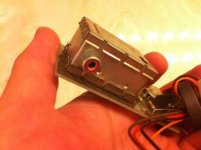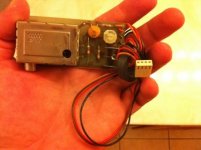Springbok
Experienced Member
So I am in the process of restoring an early 5150 Model A. It has BIOS version 2, the 2nd version of the PS (the one with the sunken screws on the top), but appears to be the early version of the case (based on this link)
http://www.minuszerodegrees.net/5150/early/5150_early.htm
It has a 192 KB memory expansion card with the old black wider bracket, and an early CGA card (as seen in the link above). One thing puzzling me is the thing below. It was literally stuck to the inside of the case using some tape. It wasn't connected to anything. It looks like it has an analog input and an analog output, with a circular magnet looped through the wires. It has "BP3212 Astec 1980" written on the back. Google revealed nothing.
There was also a vintage modem card installed. Its a full length card with another card piggy-backed on it. I am assuming it was added later because the back-plate is silver. I don't know if the Astec card is related to the modem or not.
Thanks.




http://www.minuszerodegrees.net/5150/early/5150_early.htm
It has a 192 KB memory expansion card with the old black wider bracket, and an early CGA card (as seen in the link above). One thing puzzling me is the thing below. It was literally stuck to the inside of the case using some tape. It wasn't connected to anything. It looks like it has an analog input and an analog output, with a circular magnet looped through the wires. It has "BP3212 Astec 1980" written on the back. Google revealed nothing.
There was also a vintage modem card installed. Its a full length card with another card piggy-backed on it. I am assuming it was added later because the back-plate is silver. I don't know if the Astec card is related to the modem or not.
Thanks.




